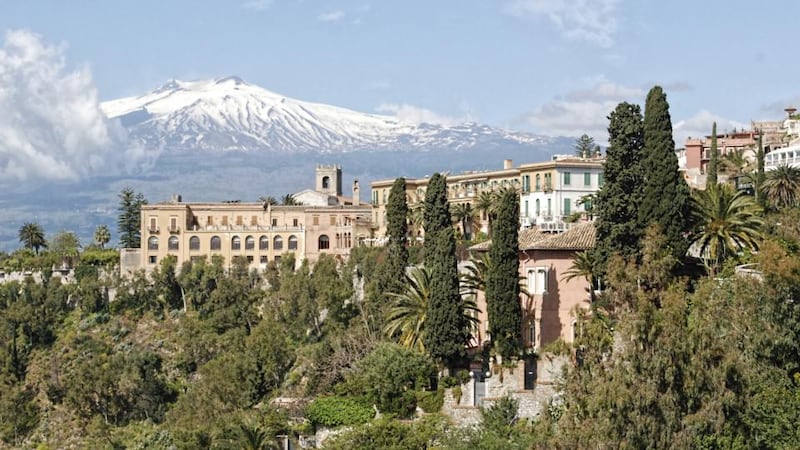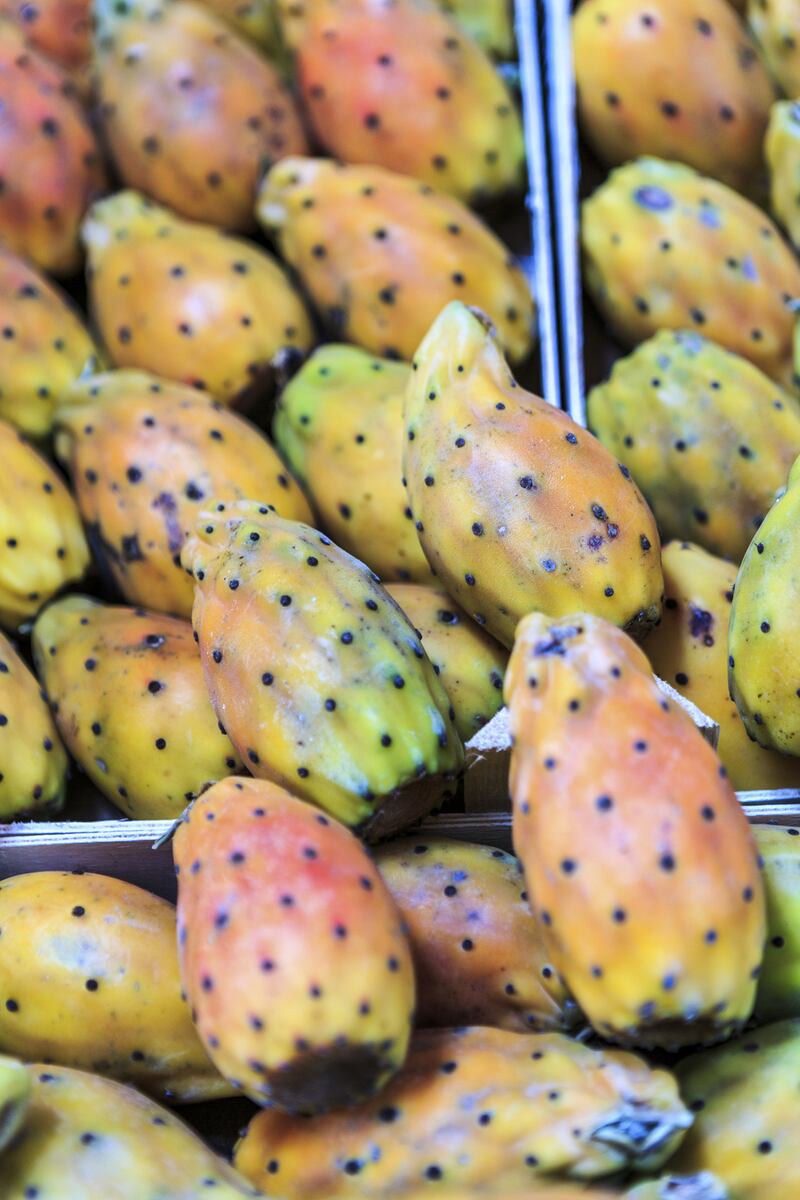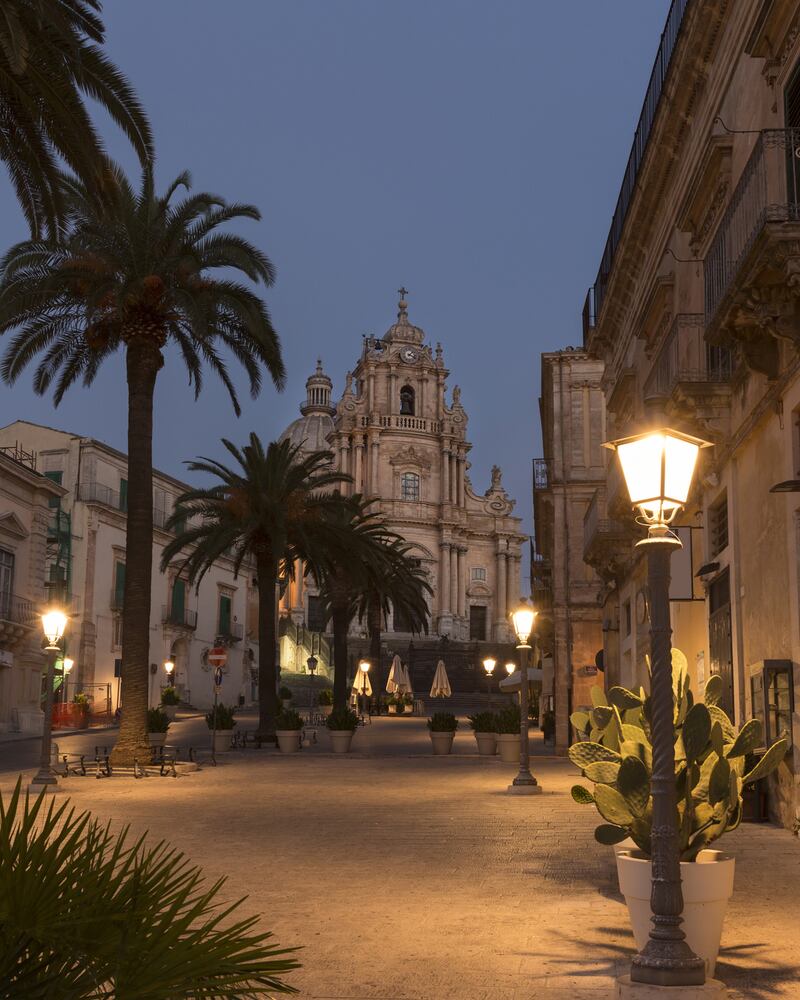The Dom spread his hands and gave me the most Sicilian of shrugs. He then proceeded to make me several offers I found hard to refuse.
First, he offered me Shirley Temple. Then Cinderella. Then a Garibaldi. I settled for a Vesper martini. Mario Puzo was not on the “menu apertivo”.
When in Sicily, do what the Sicilians do. Eat, drink and try and play golf. For 3,000 years, Sicily has experienced many invasions. The latest invaders are golfers.

Domenico Micali is the barman at the five-star Donnafugata Golf and Spa Resort which offers the best 36 holes out of the 129 currently available in Sicily. There are six courses. Including the oldest, “Il Picciolo” (1989), at the base of Mount Etna.
Putting is a challenge. You have to allow for sudden, often explosive changes in the earth’s crust. Magma can ruin your card.
Donnafugata (“Lady of Flight”) boasts Gary Player’s Parkland course and the fabulous Links, created by Italian architect Franco Piras. There’s a new “Darren Clarke Academy of Excellence” where you can traumatise the charming pro, Davide, with your grip, stance, shank and top. And, if you have been on the salami and “Birra Moretti”, your breath.
The 202-room Donnafugata, 20 minutes from Comiso airport with its new twice-weekly Ryanair route in and out of Dublin, isn’t the best base to explore south- east Sicily. Because you don’t want to leave.

You don’t want to leave the almond body scrubs, the Donnafugata Tancredi wine, the two pools and three restaurants. Head chef Damiano Bassano tests the elasticated waist of your golf shorts and slacks with ravioli stuffed with aubergine and mozzarella, suckling pig with apple potato cake and marsala and chocolate and banana semifreddo ice cream.
In the Il Carruba (carob) restaurant he does things with cherry tomatoes you couldn’t imagine. He will test your tuna, Pescespada ( swordfish) and ewe’s milk cheese thresholds. His desserts will make you hesitant to go topless on the local Punta Secca beach. The courses are wonderful. I’ve driven into the graveyard on the first at Ballybunion. But Donnafugata is the only place I’ve ended up in a necropolis. The Parkland is an archaeological site. My rescue club has got me out of most things. But, on the 12th, I took three to get out of the sixth century BC.
If you do want to leave, Barbara Iurato of Eracle Travels, in reception, will sort you out – whether you are an Inspector Montalbano anorak or not. The show was filmed around Val di Noto, famous for its eight Baroque showpiece villages. Like much of the area, Noto was rebuilt after the 1693 earthquake.
Wine being the rootstock of Sicilian hospitality, Barbara will recommend a winery, such as Valle dell'Acate in Contrada Bidini, Where, being fed scaccia ( flat bread stuffed with tomato and ricotta ) you learn how seven wines have been made from seven types of soil by six generations of Sicilian winemakers.
Sicily is hard to metabolise. There’s too much to take in. It isn’t the place to diet. In Modica, up in the Hyblaean mountains, the Dolceria Bonajuto chocolate shop insists you wear a hairnet and surgical smock. You learn how chocolate has been made since 1880. You quickly feel you were born around then. Or even earlier. In Aztec times. It goes on a bit.
Seeing a wedding at the neo-classically-domed San Giorgio Cathedral made up for it, as did our guide refraining from beginning every sentence with “According to Thucydides . . .”.

Ragusa’s other architectural highlight is the Santa Maria delle Scale (Church of the Steps). I fell in love with the Corinthian columns, the notable Gothic -Catalan portals, the caryatids and grotesques. But my knees hated the steps. Three hundred and thirty-three of them. And that was just one way. I lit a candle for my anterior cruciate ligament.
Two hours up the coast from Ragusa is 2,700-year-old Syracuse and the one square kilometre island of Ortygia. You can do the seawall circuit ( Foro Italano) before turning into alleyways and rococo courtyards to see old men vaping on their e-cigarettes and ladies taking in and putting out washing on balconies. You pass gelaterias, pizzerias ( one is called Archimedes after Syracuse's favourite swotty son), hat shops (cappelleria), bread shops , cake shops, pasta shops and hole-in-the-wall trattorias.
Piazza Duomo, with its cathedral (a fifth-century Doric temple transformed into a Christian church in Byzantine times), is the place to dunk a brioche into your “granita” – an almond, strawberry and coffee whipped-cream high-energy shake.
You need fuel to wander around the Citta Vecchia. Ambling through the morning market near the sixth-century Doric Temple of Apollo, you're greeted by piles of saffron-flavoured Piacentinu cheese, basketfuls of fennel (finocchio), amaranth grains and pistachio as well as cured meats, unfeasibly large aubergines, ridiculously healthy-looking lemons, cassata sweets and prickly pears (figi d'inda). And slab after slab of fish. Provola cheese bulbs dangle everywhere.
You dodge barrowboys. And give way to porters hernia-ising themselves carrying haunches of meat. You're pursued by fisarmonica players playing the Godfather theme. In Sicily it's hard to escape Harry Connick Jr. It tests your accordion tolerance level.
Syracuse is a city of catacombs, basilicas, marble, majolica pavements, fountains, statues and baroqued palazzios. The Archaeological Park has an amphitheatre, an aqueduct, the Ear of Dionysius (a 20m high arch carved out of the rock face and named by Caravaggio in 1608), the largest Greek theatre in the Greco-Med world and a great sign at the tacky bus station : “Souvenir Toilet Bar”.
Further up the coast is Mount Etna and the best places to stay are 40 minutes away in Taormina, in the Grand Hotel Atlantis Bay, Belmond Villa Sant’Andrea or Belmond Grand Hotel Timeo.
The latter's Literary Bar and Terrace looks out over the Ionian Sea towards Calabria. Etna (from the Phoenician for chimney) is to the side and the bays of Mazzaro and Naxos below. The Grand has a Greek/Roman amphitheatre in its back garden. It's classic and much celebrated rubble. The neo-classical 1873 hotel has the best resident bar pianist in Sicily. Franco Cirino plays everything from the Godfather theme to Liszt, Dave Brubeck and the Beatles. He is erupting classics all the time.
A designated driver is recommended in Taormina, so it's best to catch an "ape". The ape (ap-pay) was launched by scooter company Piaggio in 1948. Feeling either a bit of a celebrity or a bit of a twit, you buzz about in an iconic soft-topped, three-wheel 1960 Ape Calessino touring the teatro antico which is still used for concerts and a film festival.
The tour entails a compulsory almond wine Blandanino cocktail in the Churchill Caffe san Giorgio. You sign the " Book Of One Hundred Thousand names". Your autograph joins the likes of Cary Grant and Rita Hayworth. You stroll the Corso Umberto main street to make room for a quick one in the Wunderbar in the Piazza 1X Aprile. DH Lawrence allegedly wrote Lady Chatterley's Lover there and Tennessee Williams drank too much there while writing A Streetcar Named Desire. He described Taormina as "stupendously and overwhelmingly beautiful". The €3-one-way funicular takes you down to the Belmond Villa Sant'Andrea hotel to fulfil your remaining sybaritic fantasies.
The Villa Sant’ Andrea was built in 1830 as his summer residence by a Cornish engineer, a student of Brunel, who constructed the Etna railway. You watch guests sip spumante on the exclusive beach and dive from the rocks. The hotel was a playground for film stars in the 1950s and 1960s.
Sebastiano rows you to the local grottoes. Then onto Isola Bella, once home of a friend of Queen Victoria and now a nature reserve.
At the Villa you quickly develop a bad amaretti morbidi cookie habit. And its Oliviero restaurant, its palatial rooms, the service, the wine list, the moonlit massages and the views further conspire into helping you to develop a serious and very probably incurable addiction to the dolce vita.









